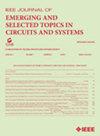Enhancing Image Quality by Reducing Compression Artifacts Using Dynamic Window Swin Transformer
IF 3.7
2区 工程技术
Q2 ENGINEERING, ELECTRICAL & ELECTRONIC
IEEE Journal on Emerging and Selected Topics in Circuits and Systems
Pub Date : 2024-04-24
DOI:10.1109/JETCAS.2024.3392868
引用次数: 0
Abstract
Video/image compression codecs utilize the characteristics of the human visual system and its varying sensitivity to certain frequencies, brightness, contrast, and colors to achieve high compression. Inevitably, compression introduces undesirable visual artifacts. As compression standards improve, restoring image quality becomes more challenging. Recently, deep learning based models, especially transformer-based image restoration models, have emerged as a promising approach for reducing compression artifacts, demonstrating very good restoration performance. However, all the proposed transformer based restoration methods use a same fixed window size, confining pixel dependencies in fixed areas. In this paper, we propose a new and unique image restoration method that addresses the shortcoming of existing methods by first introducing a content adaptive dynamic window that is applied to self-attention layers which in turn are weighted by our channel and spatial attention module utilized in Swin Transformer to mainly capture long and medium range pixel dependencies. In addition, local dependencies are further enhanced by integrating a CNN based network inside the Swin Transformer Block to process the image augmented by our self-attention module. Performance evaluations using images compressed by one of the latest compression standards, namely the Versatile Video Coding (VVC), when measured in Peak Signal-to-Noise Ratio (PSNR), our proposed approach achieves an average gain of 1.32dB on three different benchmark datasets for VVC compression artifacts reduction. Additionally, our proposed approach improves the visual quality of compressed images by an average of 2.7% in terms of Video Multimethod Assessment Fusion (VMAF).利用动态窗口斯温变换器减少压缩伪影,提高图像质量
视频/图像压缩编解码器利用人类视觉系统的特点及其对某些频率、亮度、对比度和色彩的不同敏感度来实现高压缩。压缩不可避免地会带来不理想的视觉效果。随着压缩标准的提高,恢复图像质量变得更具挑战性。最近,基于深度学习的模型,尤其是基于变换器的图像复原模型,已成为减少压缩伪影的一种有前途的方法,并表现出非常好的恢复性能。然而,所有基于变换器的还原方法都使用相同的固定窗口大小,将像素相关性限制在固定区域内。在本文中,我们针对现有方法的不足,提出了一种新颖独特的图像修复方法,首先引入内容自适应动态窗口,将其应用于自关注层,然后由我们在 Swin 变换器中使用的通道和空间关注模块进行加权,以主要捕捉长距离和中距离像素依赖性。此外,通过在 Swin Transformer Block 中集成一个基于 CNN 的网络来处理由我们的自我关注模块增强的图像,进一步增强了局部依赖性。通过使用最新压缩标准(即多功能视频编码(VVC))压缩的图像进行性能评估,以峰值信噪比(PSNR)衡量,我们提出的方法在三个不同的基准数据集上实现了 1.32dB 的平均增益,从而减少了 VVC 压缩的人工痕迹。此外,在视频多方法评估融合(VMAF)方面,我们提出的方法平均提高了压缩图像的视觉质量 2.7%。
本文章由计算机程序翻译,如有差异,请以英文原文为准。
求助全文
约1分钟内获得全文
求助全文
来源期刊

IEEE Journal on Emerging and Selected Topics in Circuits and Systems
ENGINEERING, ELECTRICAL & ELECTRONIC-
CiteScore
8.50
自引率
2.20%
发文量
86
期刊介绍:
The IEEE Journal on Emerging and Selected Topics in Circuits and Systems is published quarterly and solicits, with particular emphasis on emerging areas, special issues on topics that cover the entire scope of the IEEE Circuits and Systems (CAS) Society, namely the theory, analysis, design, tools, and implementation of circuits and systems, spanning their theoretical foundations, applications, and architectures for signal and information processing.
 求助内容:
求助内容: 应助结果提醒方式:
应助结果提醒方式:


